AUGUST 29, 2010 — “It seems like all of the boys who never grew up and wanted bigger and better toys moved to Alaska,” a wise coworker quipped to me after arriving in Alaska this summer. Soon enough, I discovered that my coworker was right: I found it almost impossible to meet anyone without a pilot’s license or boat captain’s license in Alaska. Though Alaska is the largest state in the Union, it has fewer miles of road than any other state, making most places accessible only by plane or boat. Even the state capital, Juneau, is unreachable by car. It seems as though all of those Peter Pans escaped the Lower 48 (what Alaskans call the continental US), moved to one of the most logistically complicated destinations on Earth, and became pilots. Today, Alaska has the highest number of pilots per capita in the country.
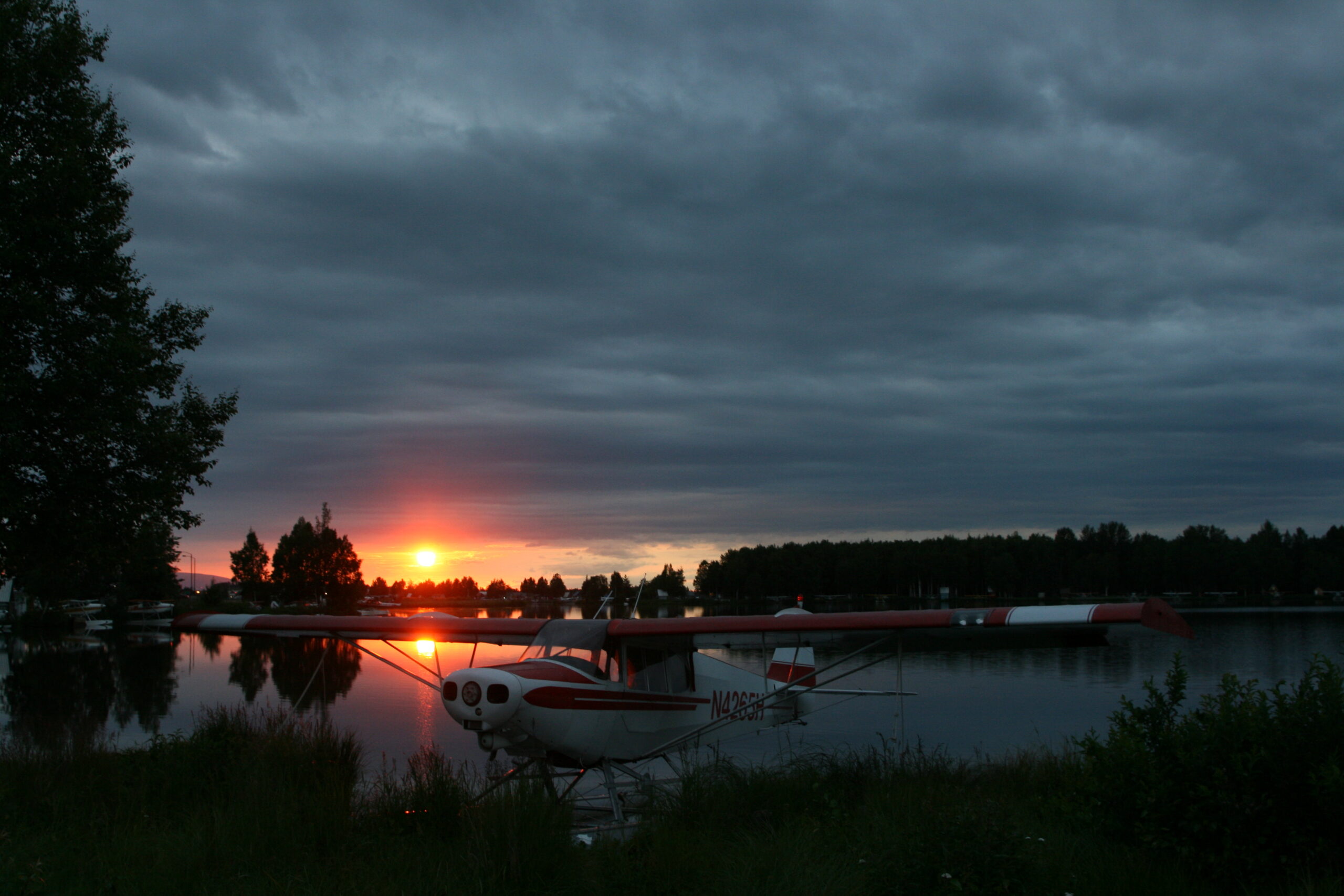
1948 Piper PA-14 Family Cruiser
For me, this makes Alaska especially exciting, because no matter where you are, if you’re outside Anchorage, you’re in a remote, inaccessible place — my favorite kind. The amount of time I spent watching planes take off and land from the Lake Hood Seaplane Base in Anchorage was topped only by the amount of time I spent being whisked around Alaska on the planes themselves, flying over far flung terrain blanketed with crystal-clear lakes, milky glacial rivers, creamy-blue glaciers, and emerald mountains. Much of Alaska would be considered totally impenetrable if it weren’t for bush planes outfitted with tundra tires, floats, and skis. Before I left the Lower 48 for Alaska, I barely knew the difference between a 747 and a Piper Super Cub. Now, out of necessity, I can not only identify a Beaver, an Otter, a Saratoga, a Cessna 207, a Dash 8, and an R44 but I can tell you what kind of airstrips they need for landing and how many people fit in each.
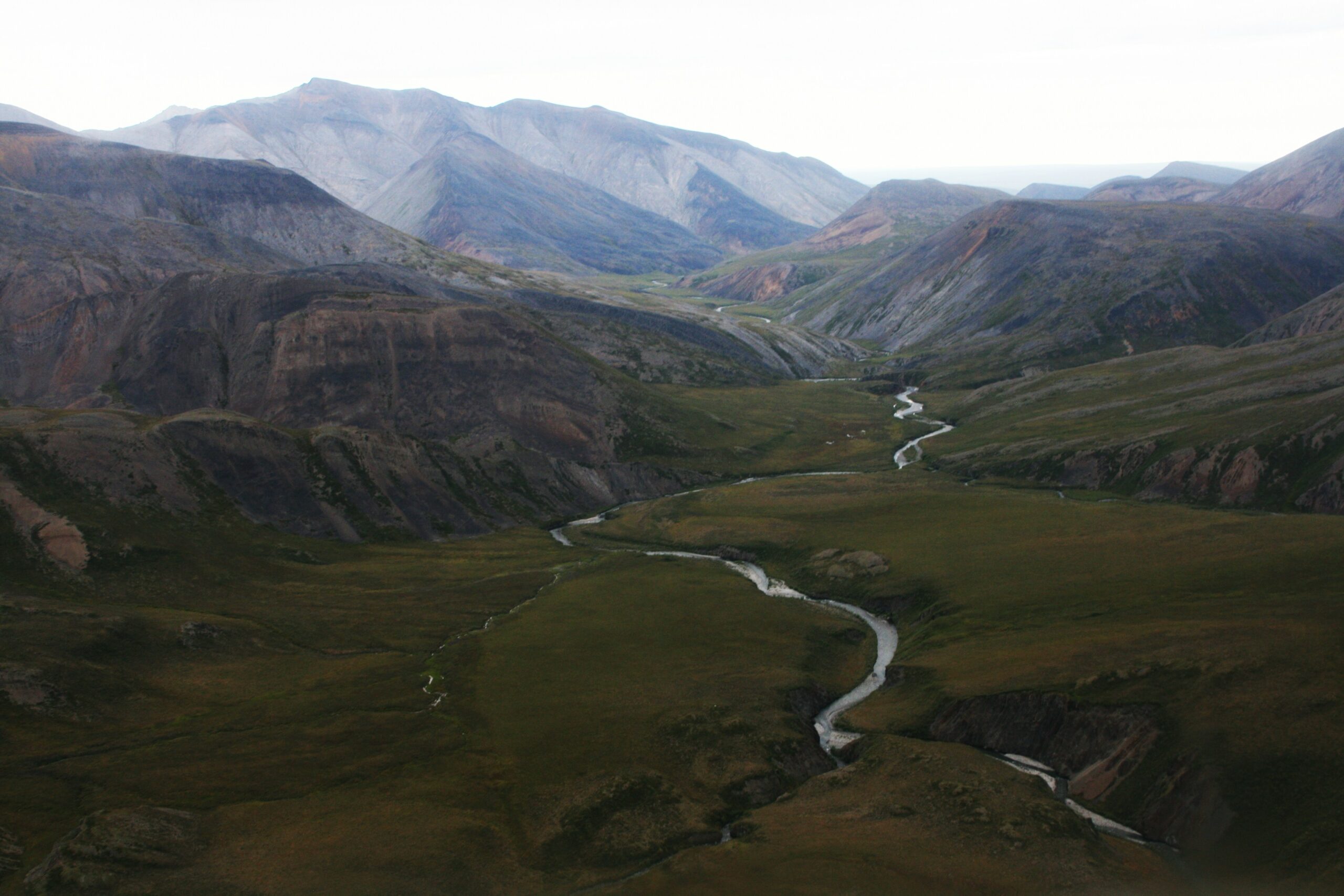
Rivers flow through the Arctic National Wildlife Refuge.
Flying around Alaska redefined my understanding of “remote.” One morning, my boss, Mitch, and I embark on a mission to seek out the Porcupine Herd, a mass of caribou that migrate every year along the Porcupine River, traveling southwest from their calving grounds in northeastern Alaska’s Arctic National Wildlife Refuge to the southwestern end of Alaska’s Brooks Range. After taking a commercial flight over 600 miles north of Anchorage to Deadhorse, a tiny oil-drilling village sitting on the Arctic Ocean, Mitch and I ask an Alaskan bush pilot to take us in a Cessna 207 — which, by the way, can seat up to six passengers but can’t land on arctic tundra without special tires — to the western edge of the Arctic National Wildlife Refuge. He flies us through mountain passes with rivers flowing under us, and for the first time in my life, I see the spectacular olive-colored tundra and coffee-colored mountains of ANWR. At the beginning, we only see a small sprinkling of caribou, but as we fly further into the Refuge, we spot thousands. They’re just a small portion of the 150,000 in the Porcupine Herd, but they cover the landscape as we fly over ANWR’s rugged peaks and deep valleys.
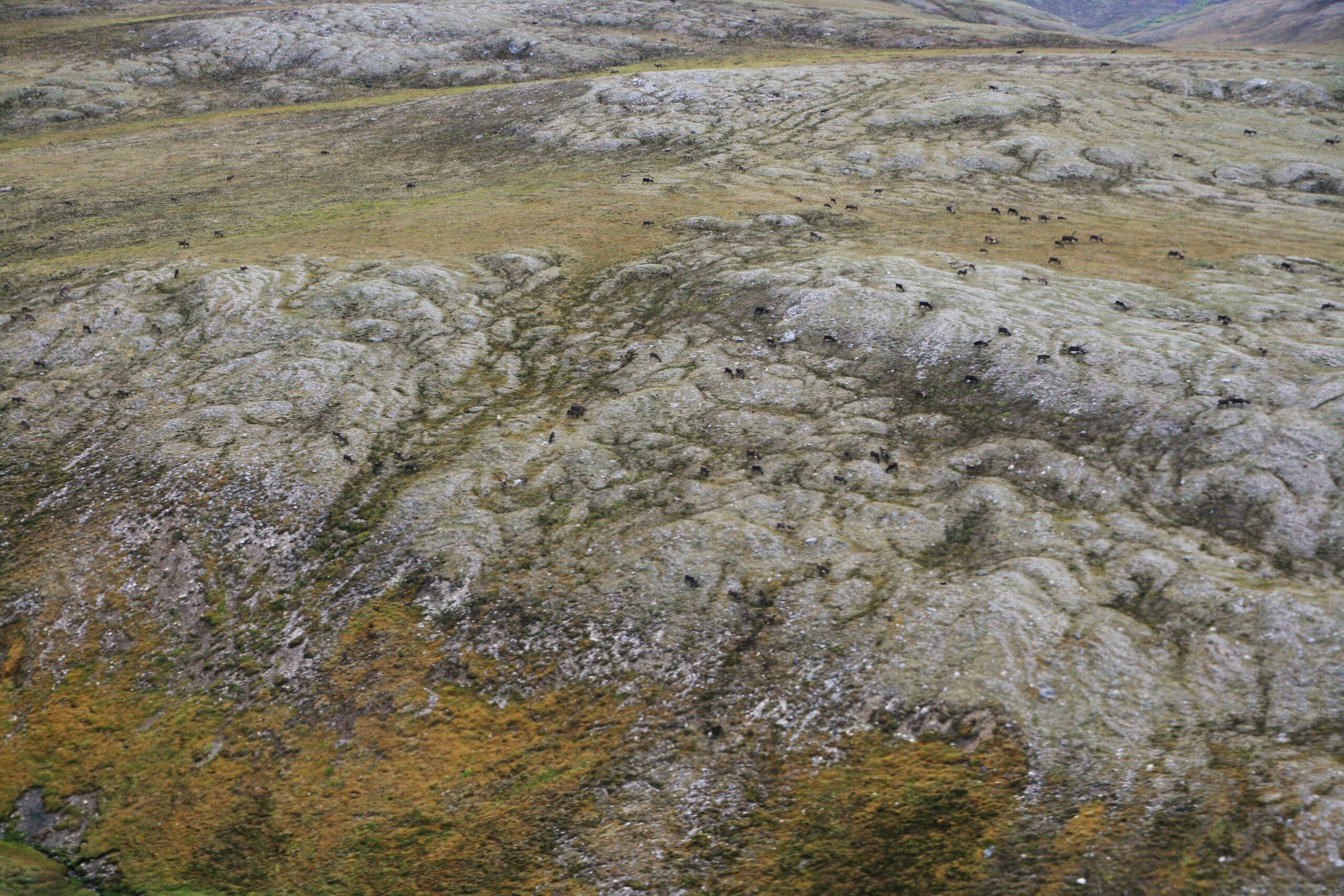
Caribou from the Porcupine Herd graze in the Arctic National Wildlife Refuge.
“We’re 600 miles from the nearest major city and 100 miles from the nearest road,” our bush pilot informs us as I take photographs of thousands of caribou through a plane window. We marvel at the wilderness below, one comprised only of mountains and caribou. Soon, our bush pilot lands on a remote airstrip in the wilderness to give us a chance to explore. I look across the arctic tundra, and there’s nothing to see but the horizon. Mitch and I, armed with a loaded rifle in case we need to defend ourselves from bears and moose, begin piloting two all-terrain vehicles across the tundra. We bounce up and down and get jerked around on the unforgiving ATV suspensions and uneven ground, so much so that the weld points on my ATV’s rifle mount give in when I fly over a particularly large knoll. When I stop to remount my rifle, we see a long rainbow stretching over us. As we gawk at the arctic sky, swarms of mosquitos encircle our heads and we’re forced to keep driving to avoid swallowing hundreds of bugs.
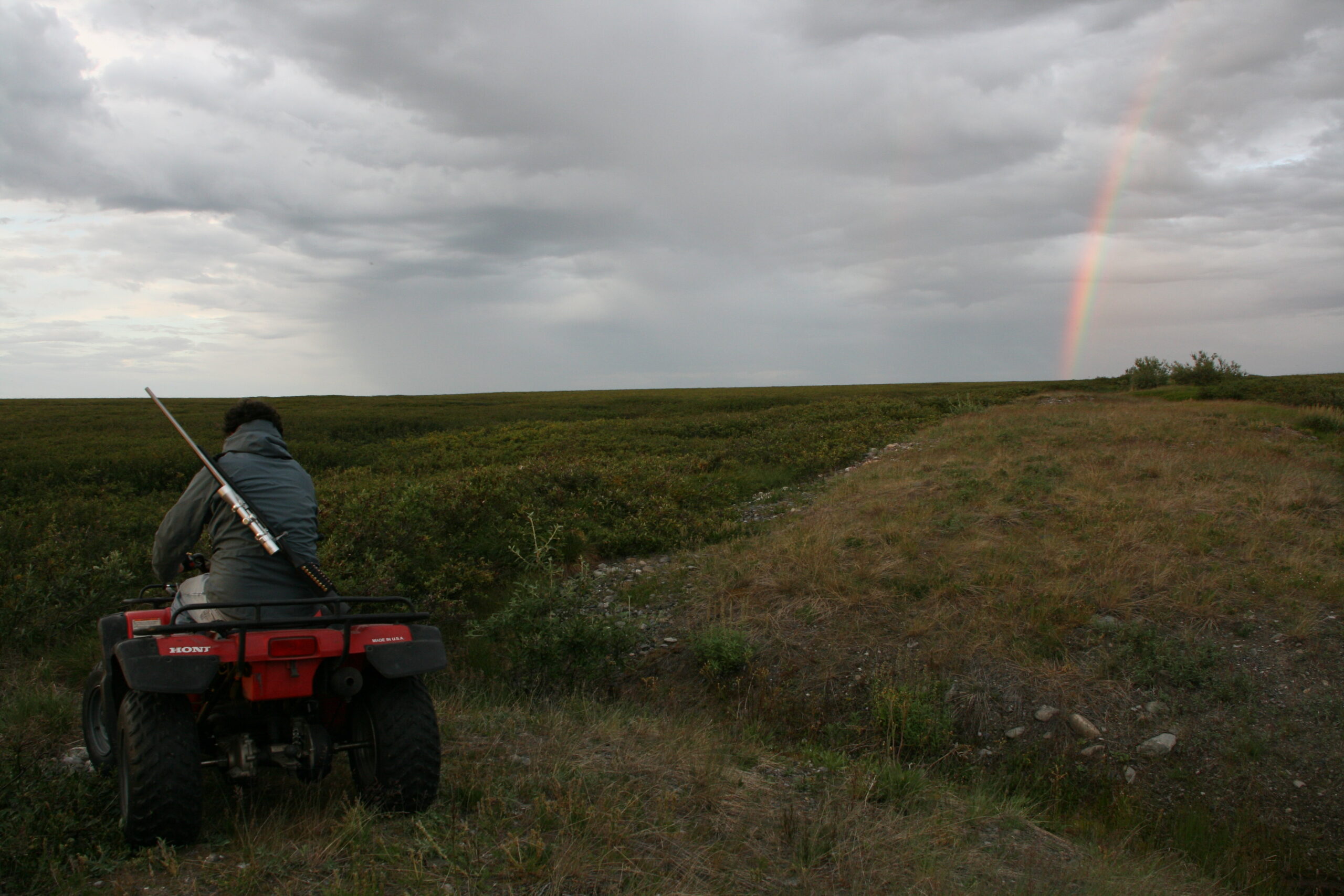
A rainbow appears in the arctic sky above an ATV.
We ride into the night, vaulting across the landscape on our ATVs, watching the sun dip slowly toward the horizon as it casts an unnatural orange glow across slate-colored river beds and green, prickly underbrush. We’re over 250 miles north of the Arctic Circle, and the sun will never set.
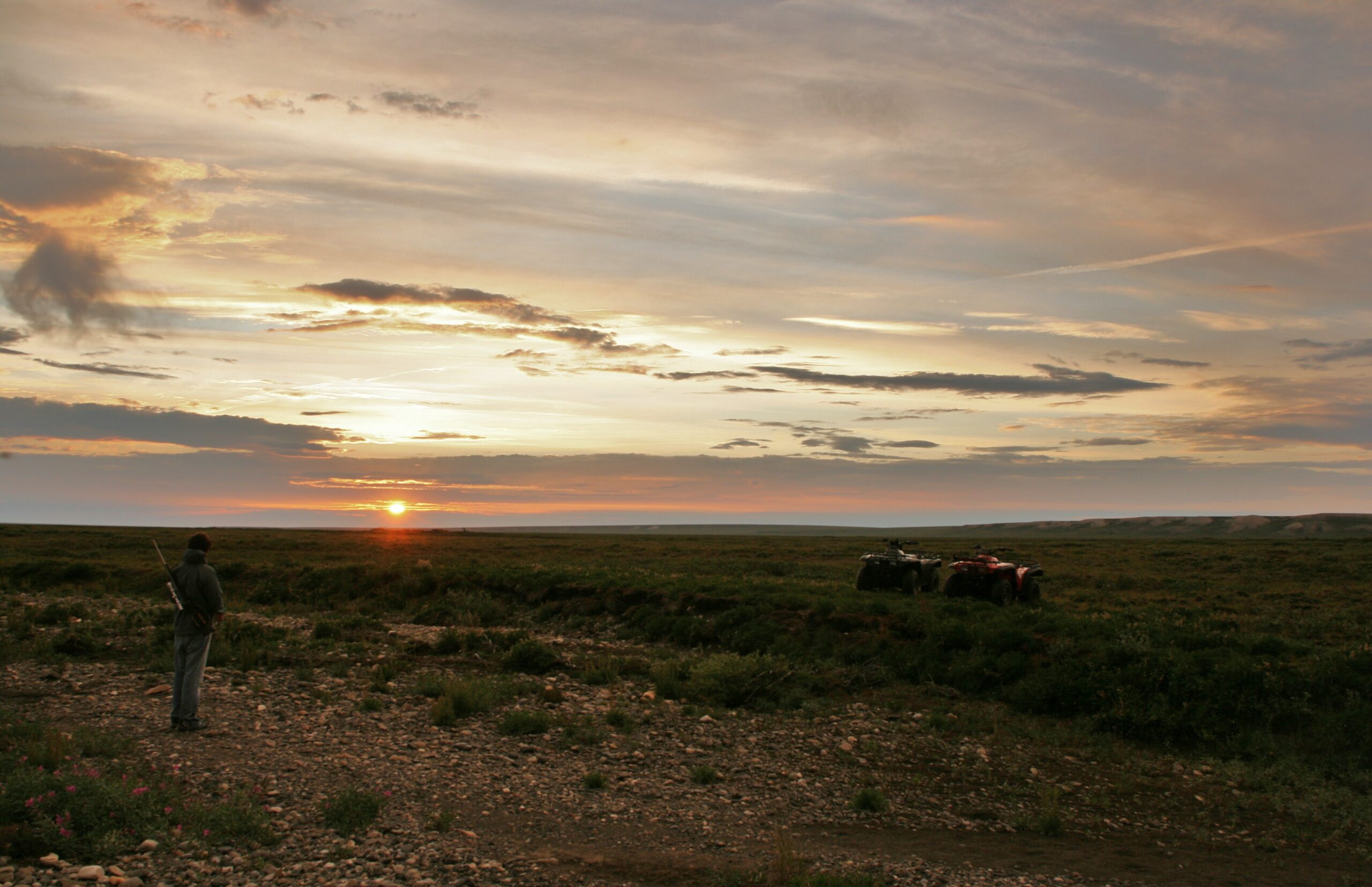
The sun dips toward the horizon above two ATVs.
Like everyone in Alaska, we’re two boys in Neverland. We never want to grow up.
A whistle stop, Alaska-style
Hiking to Spencer Glacier in Chugach National Forest.
AUGUST 31, 2010 — Near the end of my Alaskan summer, after my bush plane and ATV adventures, my 61-year-old Extreme Mom decides to visit me in Alaska, and she asks me if we might be able to take a train trip from Anchorage to somewhere out-of-the-way. I’m intrigued by this idea immediately because the Alaska Railroad, which was built from 1903 to 1923 between Seward and Fairbanks, takes people to a bunch of destinations inaccessible by road. After my mom arrives in Anchorage, we join hundreds of Japanese cruise ship passengers wearing laminates and Canon cameras at the Anchorage train station. We navigate our way through a horde of black-rimmed glasses, charcoal roller bags, and plastic shopping bags to get our tickets. Quickly, the conductor ushers the Japanese tourists and us onto the Railroad’s Glacier Discovery Train. The situation feels odd, because the train’s first stop is Whittier, a remote, 200-person town on Prince William Sound that was used as a secret, World War II military installation due to its near-constant cloud cover and surrounding ring of impassable mountains. Even getting to Whittier today requires visitors to travel through the longest combined rail and roadway tunnel in North America, which allows traffic in only one direction at a time.
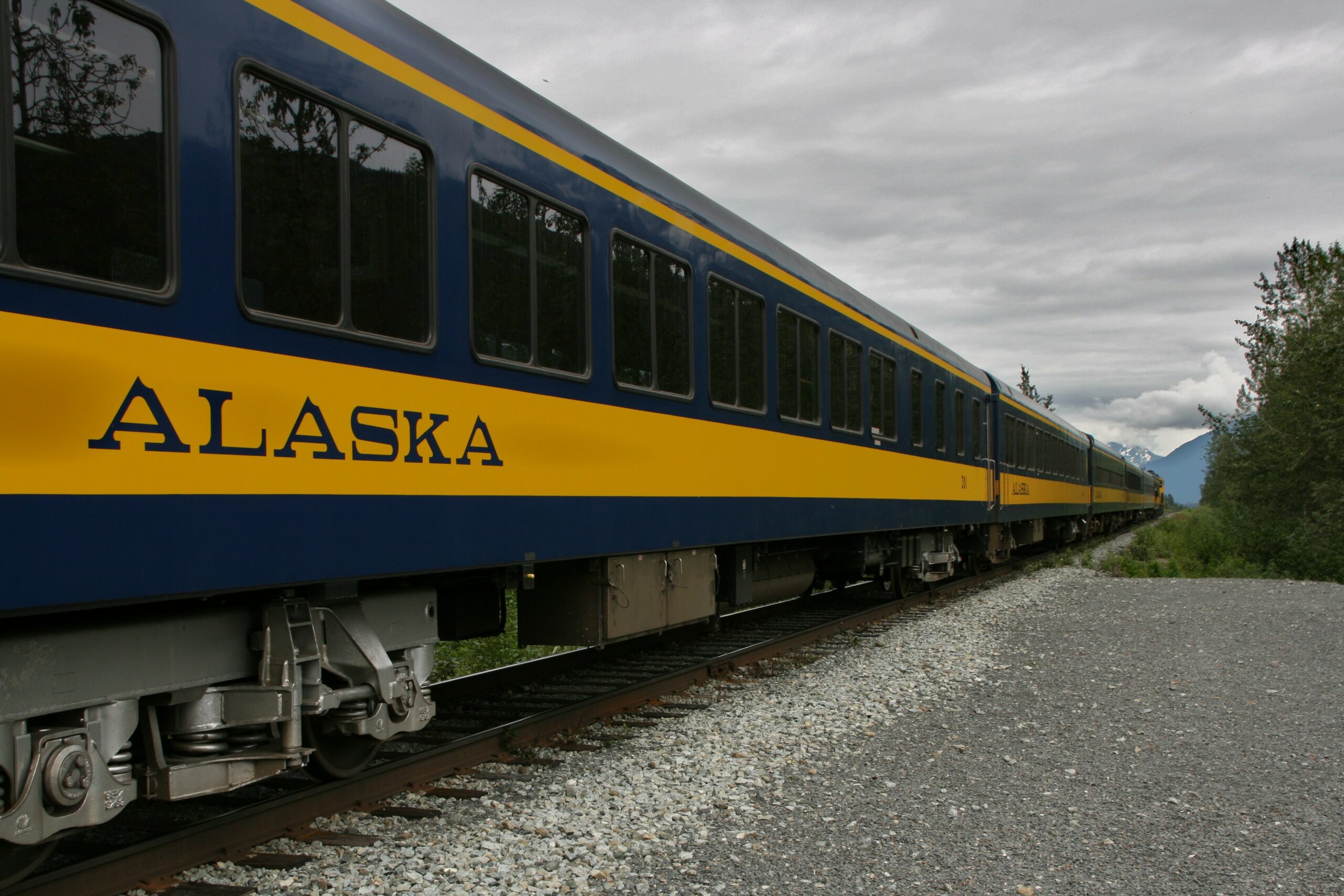
The Alaska Railroad’s Glacier Discovery Train takes passengers to Whittier, Spencer Glacier, and Grandview.
The train chugs along at about 50 miles per hour, which seems like a snail’s pace compared to the bush planes that have been my primary transportation in Alaska over the summer. But, soon, the conductor announces our arrival in Whittier, recites some detailed information about the place, and warns us that the train will be leaving again in 30 minutes, “sharp.” He sounds very serious, as though passengers often disembark the train in Whitter only to be swallowed whole by a secret military project left over from the 1950s. As my mom and I disembark, we watch the hundreds of Japanese tourists take Whittier by storm, armed with hundreds of boxes of souvenir smoked salmon. They swarm out of the train to take photos of the Buckner Building and Begich Towers, structures left behind in 1968 by the US military now occupied by a majority of the town’s residents. Then, a cruise ship swallows the entire lot of tourists. I start to suspect that the cruise ship is somehow a cover for another undercover military operation, and I wonder if our train conductor realizes that this is why people never return to his train in Whittier.
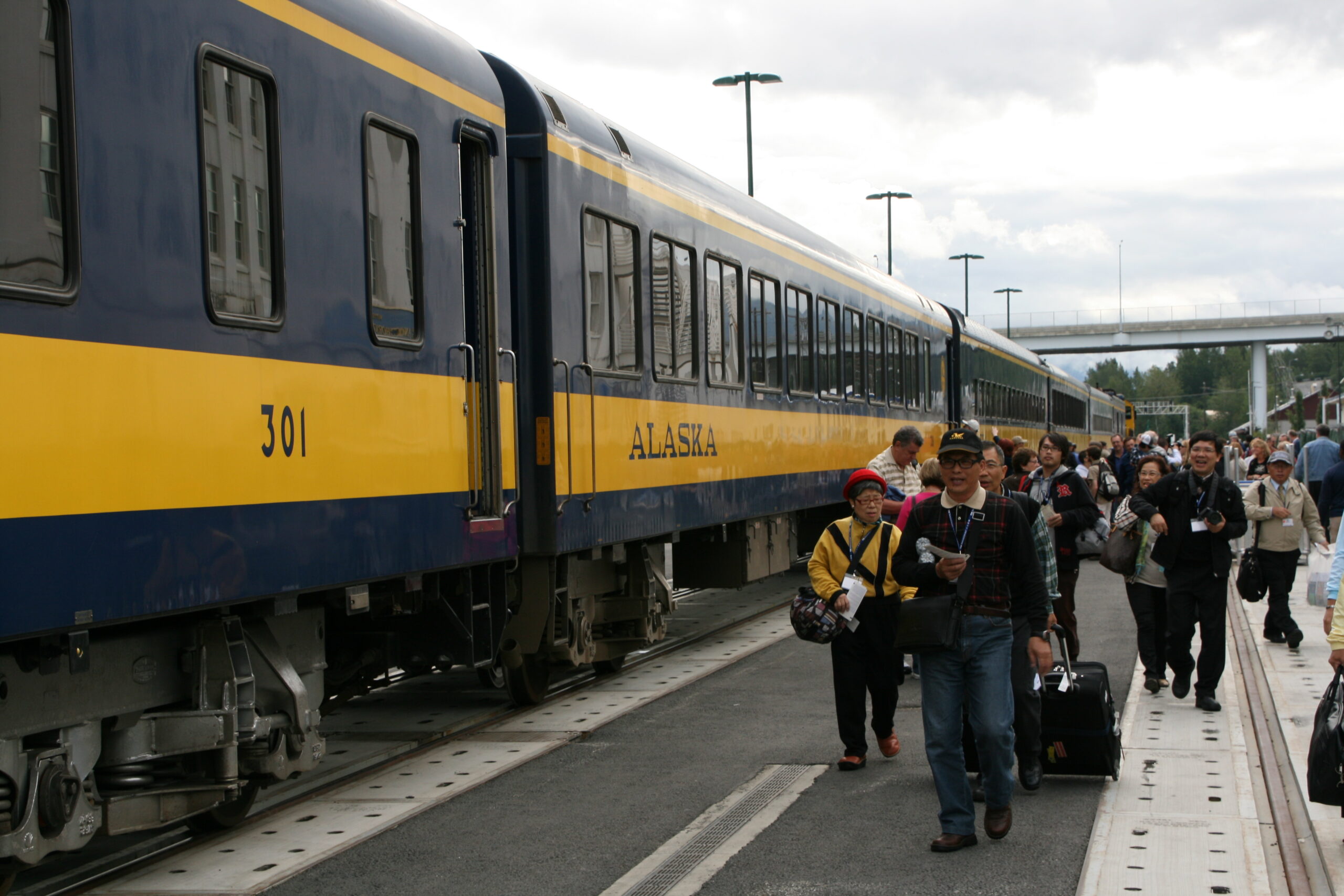
Japanese tourists prepare to board the Alaska Railroad in Anchorage, Alaska.
Reportedly, the kayaking and scuba diving in Whittier are unmatched, but my mom and I return to the train quickly so that the conductor doesn’t leave us behind. When we board the train, we find it almost completely empty and eerily quiet. The silence and the train’s rhythmic motion sedate us, and we stare out at the scenery until the train stops again, without any explanation from the conductor, in front of a sign reading, “Spencer Glacier Whistle Stop.” We disembark, hoping to see the Glacier, and ask the conductor about the train schedule.
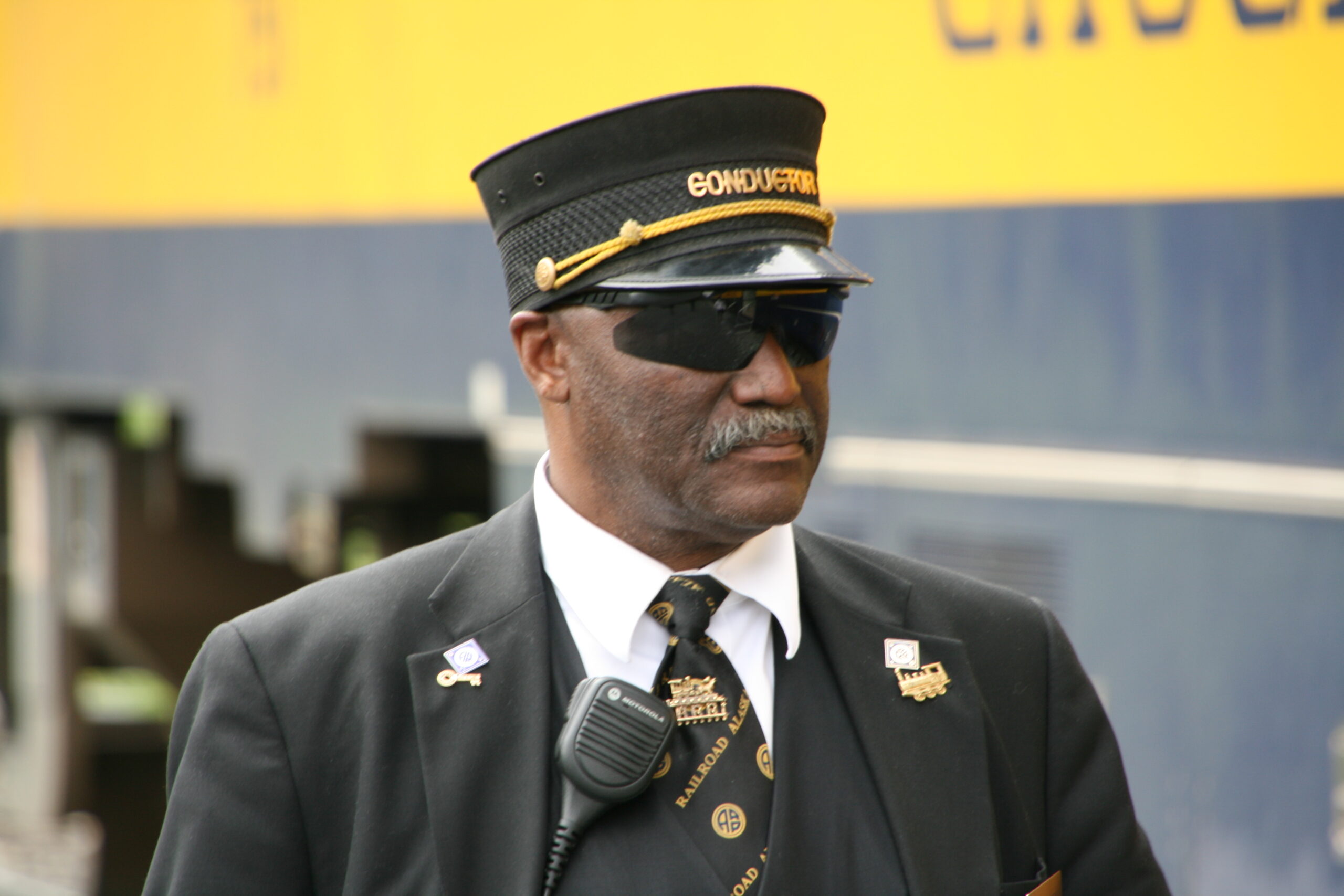
An Alaska Railroad conductor watches as tourists board his train.
“We’re leaving for Grandview now, but we’ll be back to pick you up,” he says unhelpfully. When we ask him at what time the trail will return, he tells us that this is his maiden journey as a conductor on this route and points to a nearby park ranger to ask instead. Suddenly, a final gush of Japanese tourists appears mysteriously from another train car. Guides usher them quickly into a bus heading toward the Placer River for a rafting trip. Apparently, Japanese cruise ship passengers are the only customers that the Alaska Railroad bothers to coddle.
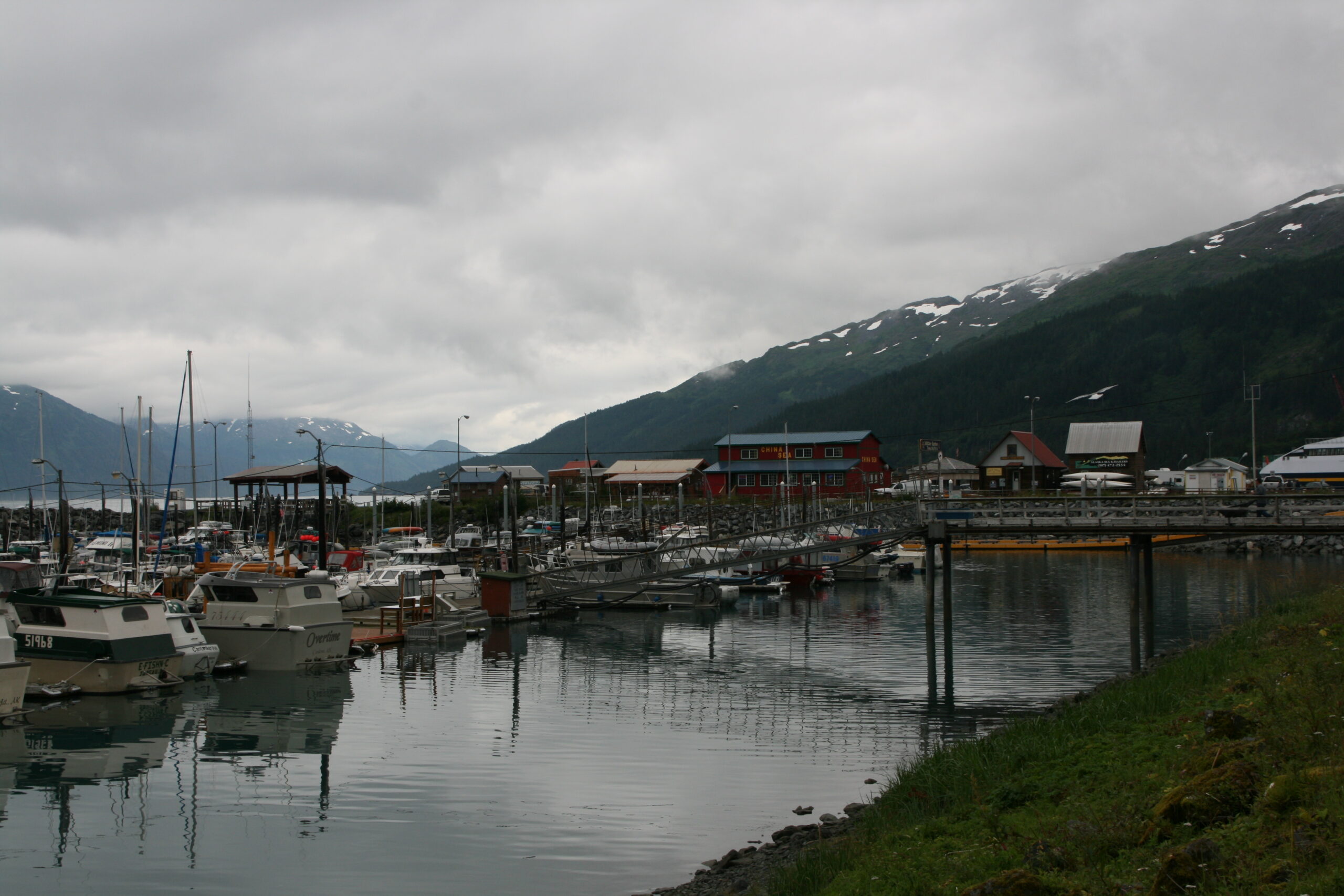
Boats sit in a harbor in Whittier, Alaska on the Prince William Sound.
The waiting park ranger tells us that the train will return in two hours. She then offers to take us on a 1.5-mile guided hike to an overlook, but my Extreme Mom sees that the entire Spencer Glacier Trail is 6.2 miles round trip and suggests that we attempt the entire length ourselves. The longer trail is too much for the handful of other hikers puppy-dogging the ranger, so we leave them and start hiking. The value of hiking in places accessible only by train and unlisted in Lonely Planet becomes obvious when we discover that we’re the only people on the trail. We follow the path as it circumscribes the lake created by the Spencer Glacier’s melt. Afraid we’ll miss our train if we take too long, we walk briskly, but we still spend time enjoying views of towering ice masses in the lake and a blue ice field covered with thousands of crevices flowing between two mountain peaks.
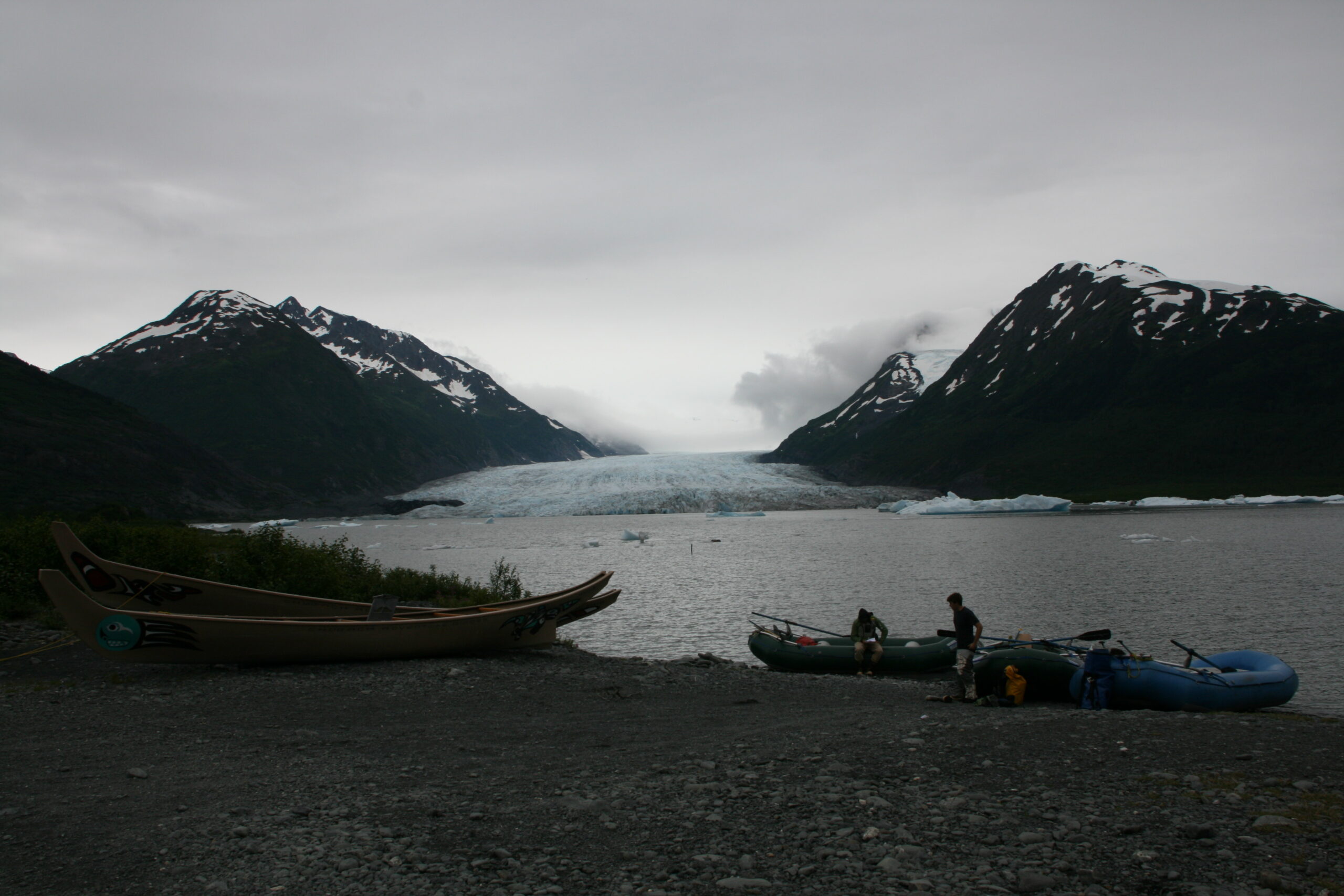
Rafts and canoes sit in front of Spencer Glacier in Alaska’s Chugach National Forest.
When we reach the end of the trail, we’re less than one hundred feet from the Glacier’s terminus. As we turn around to head back to the train, I hear a jolting crashing sound and whip around just in time to see a huge slab of ice fall off the Glacier’s edge. Hearing a 10,000 pound ice chunk crash onto the ground serves as a loud reminder that, despite the Earth’s static appearance, it’s constantly changing under our feet.
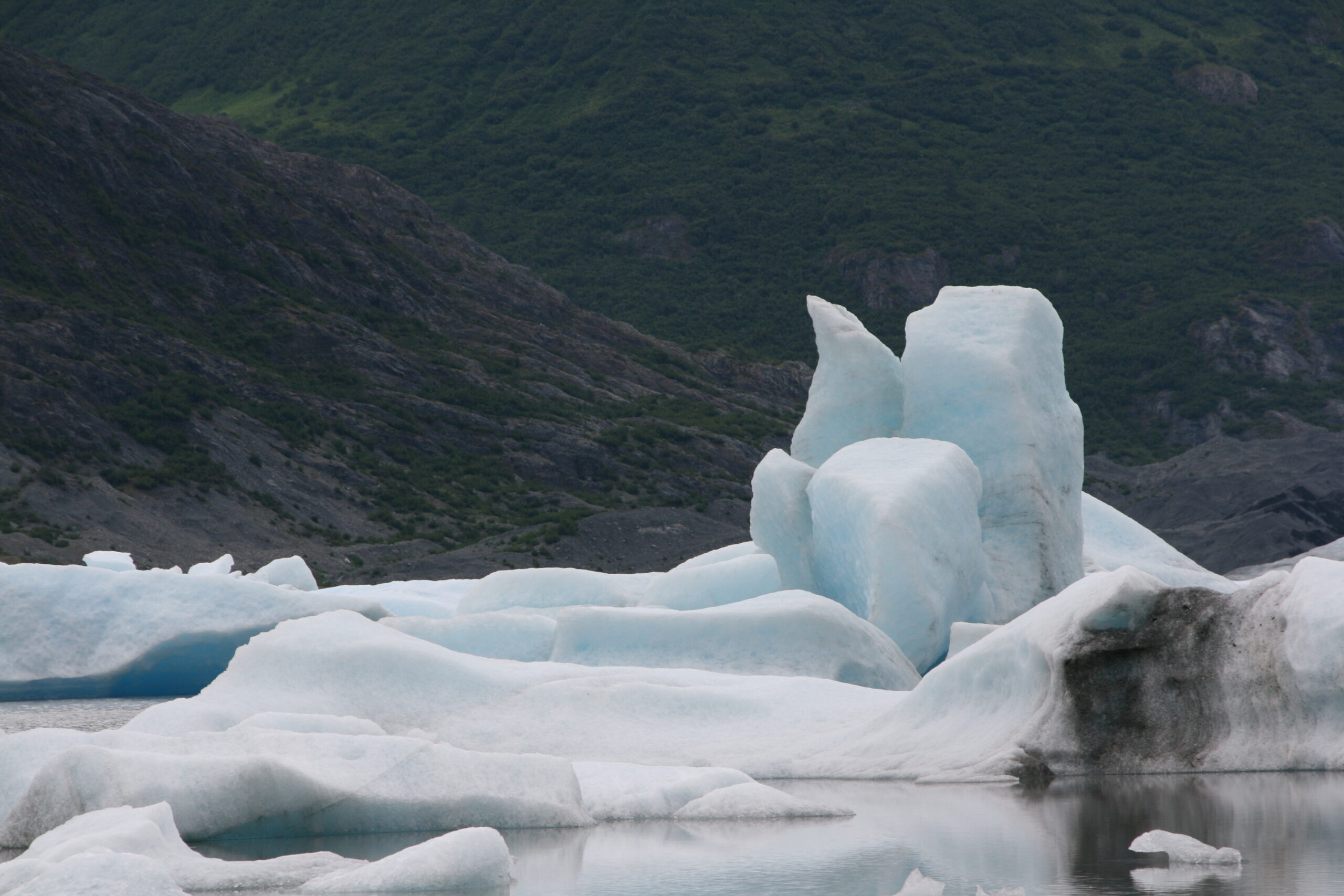
Ice chunks float in the melt of Spencer Glacier.
When my mom and I return to the train, we relax in the upper deck of the lead car as it slowly makes its way through dramatic mountain scenery back toward Anchorage. After about ten minutes, the train makes a stop to pick up the Japanese rafters. After they pile in, the train stops again about 20 minutes later in a place called Portage. Without warning, the Japanese tourists rush out of the train again to catch a bus. Their movements are ever mysterious to us, and I suspect that the bus may be transporting them and their Alaskan souvenirs to yet another secret military facility, one fueled by thousands of pounds of smoked salmon.
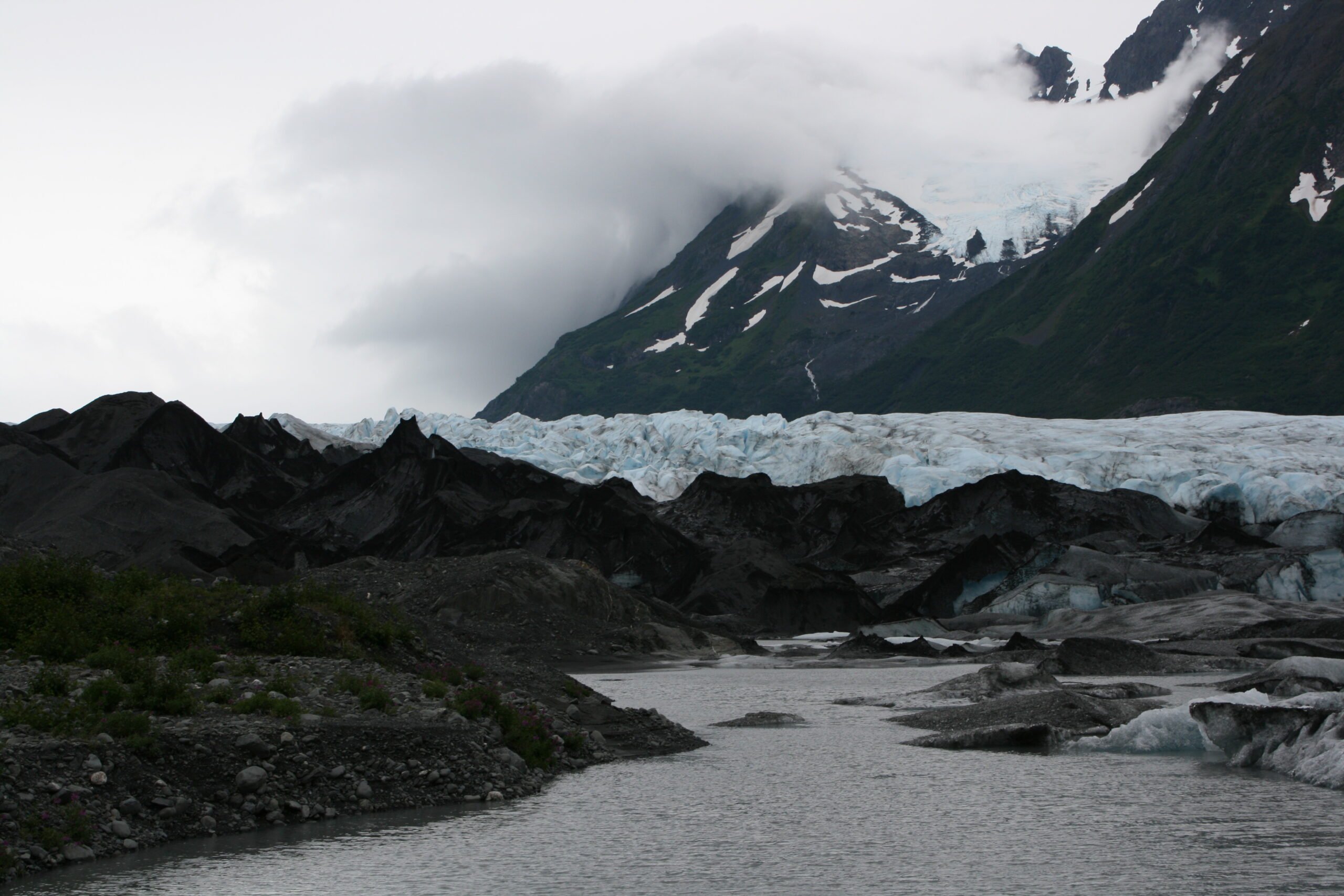
Spencer Glacier’s terminus
But the conductor informs us that that we too may choose to take the bus, which will return us to Anchorage twice as fast as the train. The train conductor doesn’t seem like he’s in much of a hurry, but neither are we.
We wave goodbye to the Japanese tourists and become hypnotized by the slow scenery outside the train’s window. We watch the Kenai and Chugach Mountains, Whittier, Girdwood, and the Cook Inlet’s Turnagain Arm slide by our windows. After a summer of being blasted across Alaska’s roadless landscape by planes, boats, and ATVs, I can’t think of any reason to disembark the slow, sleepy Alaska Railroad any sooner than necessary.
Knowles Coastal Trail Cycle Details
Lost Lake Cycle Details
How to Ride the Alaska Railroad and Hike to Spencer Glacier
OVERVIEW: The hike to Spencer Glacier from the Spencer Glacier Whistle Stop is a 2-hour, 6.2-mile round trip hike. The Whistle Stop is not accessible by road, but the Alaska Railroad takes passengers from Anchorage (leaving at 10 AM) to Girdwood (11:15 AM), Portage (11:40 AM), Whittier (12:15 PM), Spencer Glacier (1:45 PM), and Grandview (3:20 PM) on its Glacier Discovery Train.
LOGISTICS: Travelers can book a ticket from Anchorage to the Spencer Glacier Whistle Stop for $103, 24 hours in advance, by calling (800) 544-0552. For an additional $99, passengers may choose to take a rafting trip down the Place River instead of hiking to Spencer Glacier. The train leaves from the Anchorage Historic Depot, located at 411 West 1st Avenue in downtown Anchorage, at 10 AM, but the Railroad recommends that passengers arrive an hour early.
HIKING: When the train arrives at the Spencer Glacier Whistle Stop, a park ranger takes train passengers on a guided, 1.5-mile hike to a lookout point. More adventurous hikers may choose to walk the easy, well-marked, 6.2-mile round trip trail to the edge of the Glacier. Just be sure that you hike fast enough to return to the trailhead by 4:30 PM and catch the train back to Anchorage.
ROUTE: View the route below or download the Without Baggage Spencer Glacier GPS track in GPX or KML format.
Hi Hank, this is such a cool site. I was just in Alaska to work in Palmer at the Birchtree Charter School. Some of the teachers drove me to Whittier. We stopped at Alyeska to ride the tram up to the top of the ski trails. I love Alaska and I'm going to make this train trip next time. Thank you for the info.
Prairie
How was the difficulty of the hike?